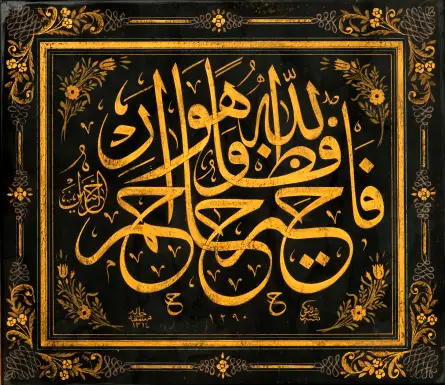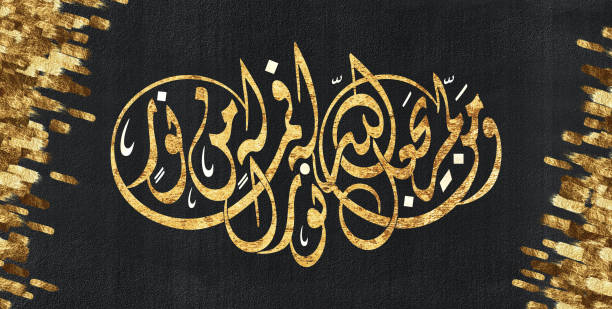
The Intriguing World of Arabic Calligraphy In 2023? Arabic calligraphy, a unique and captivating art form, has a rich history dating back centuries. In 2023, this ancient tradition continues to thrive, enchanting people around the world with its exquisite beauty and intricate designs. From its origins in the Arabian Peninsula to its widespread influence in contemporary society, Arabic calligraphy remains an art form that is both deeply rooted in tradition and constantly evolving. In this article, we will explore the fascinating world of Arabic calligraphy, its historical significance, modern-day applications, and the artists who keep this mesmerizing art alive.
Introduction
Arabic calligraphy is a visual art form that expresses the beauty of the Arabic language through intricate and stylized writing. It is not merely a means of communication but also a form of artistic expression, where the written word takes on a new dimension of elegance and harmony. The art of Arabic calligraphy has captivated audiences for centuries, and its influence can be seen in various aspects of Islamic culture and beyond.
Origins of Arabic Calligraphy

Arabic calligraphy finds its roots in the 6th century CE when the Arabic script emerged. It evolved from earlier scripts, such as Nabatean and Syriac, and eventually became an independent writing system. The development of Arabic calligraphy was greatly influenced by Islamic teachings, as writing became an important medium for the transmission of the Qur’an. The aesthetic qualities of the script were carefully cultivated, leading to the emergence of various calligraphic styles.
Calligraphic Styles
Arabic calligraphy encompasses a wide range of distinct styles, each with its own unique characteristics and historical significance. Some of the most notable calligraphic styles include:
H1 Heading: Kufic
Kufic is one of the oldest and most recognizable styles of Arabic calligraphy. It features bold, angular letterforms and is often associated with early Islamic inscriptions and manuscripts.
H2 Heading: Naskh
Naskh is a versatile and widely used script known for its legibility. It is characterized by its rounded and balanced letterforms, making it suitable for various purposes, including books, official documents, and everyday writing.
H3 Heading: Thuluth
Thuluth is a majestic and ornate style that is often used for decorative purposes. It is characterized by its elongated vertical lines and sweeping curves, creating an elegant and flowing aesthetic.
H4 Heading: Diwani
Diwani is a highly stylized script known for its intricate and elaborate letterforms. It was originally developed for use in official Ottoman documents and is often associated with royal and diplomatic correspondence.
Tools and Materials

To create Arabic calligraphy, skilled artists use specific tools and materials. Traditionally, calligraphers use a reed pen called a “qalam” and ink made from natural pigments. The qalam is cut at an angle to create different stroke widths and allows the calligrapher to achieve the desired level of intricacy in their writing. Nowadays, modern calligraphers also utilize digital tools and software to explore new possibilities and merge traditional and contemporary techniques.
Read More: 10 Ways to Improve Memory In 2023
Cultural Significance
Arabic calligraphy holds immense cultural significance in the Islamic world and beyond. It is deeply intertwined with religion, as the Qur’an’s verses are often written in beautifully adorned calligraphic scripts. Moreover, calligraphy plays a vital role in architectural design, manuscript illumination, and the creation of decorative art pieces. It serves as a visual representation of Islamic values, spirituality, and the pursuit of knowledge.
Arabic Calligraphy in Modern Times
In recent years, Arabic calligraphy has experienced a resurgence in popularity and recognition. Its striking visual appeal and cultural significance have captivated audiences worldwide. Contemporary artists have embraced this ancient art form, infusing it with new creative expressions. Arabic calligraphy has found its way into various contemporary mediums, including paintings, sculptures, digital art, and even fashion.
Contemporary Artists and Innovations
The world of Arabic calligraphy is constantly evolving, thanks to the creativity and innovation of contemporary artists. These artists are pushing the boundaries of traditional calligraphy, experimenting with new techniques, and merging it with other art forms. Their works reflect a harmonious blend of tradition and modernity, keeping the art form alive while captivating new audiences.
Calligraphy and Technology
Technology has played a significant role in shaping the practice and dissemination of Arabic calligraphy in the modern era. Digital tools, software, and online platforms have enabled artists to explore new possibilities and reach a wider audience. Calligraphy enthusiasts can now learn and practice this art form through online tutorials, interactive workshops, and virtual exhibitions.
Arabic Calligraphy Beyond Language
While Arabic calligraphy is primarily associated with the Arabic language, its appeal extends beyond linguistic boundaries. The intricate designs and harmonious compositions of Arabic calligraphy transcend language barriers, evoking emotions and aesthetic appreciation across cultures. It serves as a universal art form that celebrates the beauty of expression and the power of visual communication.
The Global Appeal of Arabic Calligraphy
Arabic calligraphy has gained immense popularity worldwide, with enthusiasts and collectors appreciating its artistic and cultural value. Galleries and museums around the world showcase exhibitions dedicated to Arabic calligraphy, attracting visitors from diverse backgrounds. Its universal appeal and ability to bridge cultural gaps make it a truly global art form.
Calligraphy Workshops and Events
To promote the art of Arabic calligraphy and foster its continued growth, numerous workshops and events are organized globally. These platforms bring together calligraphy enthusiasts, beginners, and experts alike to learn, share knowledge, and appreciate the beauty of this ancient art form. Such events serve as vibrant hubs for creativity, inspiration, and the exchange of ideas.
Preserving and Promoting Arabic Calligraphy
As Arabic calligraphy continues to evolve in the modern world, efforts are being made to preserve its historical heritage and promote its practice. Organizations, institutions, and calligraphy societies are actively engaged in documenting, archiving, and teaching calligraphy techniques to future generations. By nurturing young talent and providing platforms for established artists, these initiatives ensure the enduring legacy of Arabic calligraphy.
Conclusion
Arabic calligraphy is an art form that has fascinated people for centuries, and in 2023, its allure remains as strong as ever. This intricate and captivating practice showcases the beauty of the Arabic language while transcending cultural and linguistic barriers. From its ancient origins to its contemporary innovations, Arabic calligraphy continues to inspire and captivate audiences worldwide. As we embrace the future, let us cherish and celebrate the mesmerizing world of Arabic calligraphy.












One Comment